Beauty in the Transient
The spectacular power of architecture in places of arrival and departure by rail across Europe—the continent and beyond.
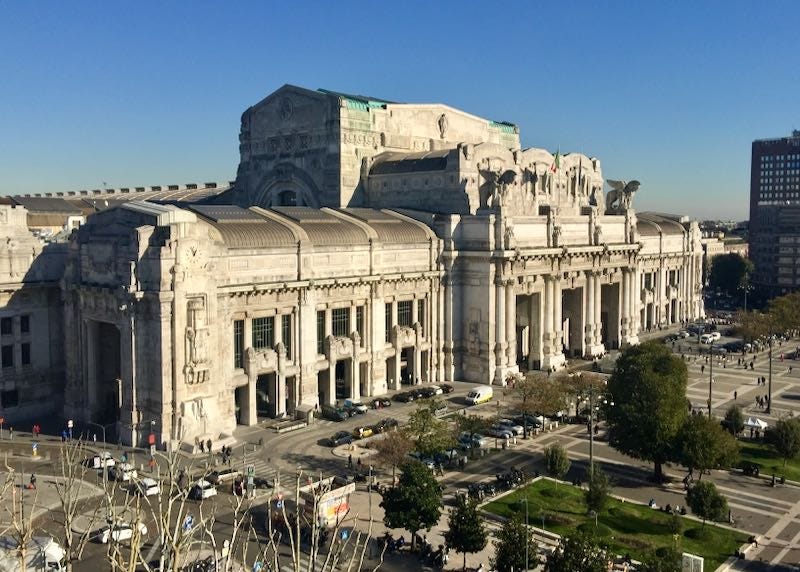
Travel by rail is still the best form of travel—simple, (often) silent, and sustainable. Ever since I can remember, I’ve been awed by the diverse landscapes of Italy and other parts of Europe. It beats driving, and it beats the miserable experience that is flying. Plus, it’s cost-effective.
One aspect of rail travel I love is that if one must wait for a train, there’s splendid architecture to admire across Europe. Along with the stories stations hold, the place itself gives the visitor a sense of welcome and hospitality. I’ve seen most, but not all, of the rail stations below.
By far my most frequented is Milano Centrale. Perhaps not everyone knows this is the largest station in Europe. Officially inaugurated in 1931, it replaced the old station built in 1864. It sits at the northern edge of the central area of Milan.
Designed to connect Italy with the rest of the continent, the station has high-speed trains to Turin, Venice, Bologna, Rome, Naples and Salerno. The Simplon and Gotthard lines connect it to Switzerland—Bern and Geneva via Domodossola, Zurich and Chiasso.
Its architectural style is a mixture of Liberty, Art Deco, and other styles. Ulisse Stacchini design this ‘Cathedral of Movement’ to achieve imposing grandeur and monumentality—200 meters of white marble across (more than 656 feet), 72-meter in height (more than 236 feet) represented a record at the time of construction.
The façade includes images of animals and symbols—winged horses up top, eight-meter-high statues of Pegasus as symbols of power and speed, lion heads and chimeras, and two large stone fountains with masks of vague Assyro-Babylonian appearance.
One of the most iconic points of the station is at street level. The Carriage Gallery surrounds passengers with mosaics and sumptuous decorations. Glass illuminates the iron vaulted-structure.
Once upon a timne carriages went through here. Today it’s escalators up to the main concourse, which seem endless when there’s little margin of error to catch a train. This and the potential crowds is why it’s a good idea to get there early.
At platform level is the ‘Transatlantico,’ another gallery illuminated by large windows, with statues and reliefs on the walls and mosaics on the floor. During the economic boom, it was a meeting place for the Milanese.
This space once housed a model ship, hence the name. A historical reference to the large and fast passenger ships that covered Atlantic routes between the two world wars and up until the 1960s. The high-fashion boutiques and other shopping opportunities are relatively new, along with convenient food options.
After security1 the 24 platforms lead to the trains. Every day around 330 thousand passengers on 600 trains depart towards their destination or the beginning of their journey. Above them, like a protective ribcage, is a wrought iron vault.
Composed of five iron and glass arches, this structure is an example of advanced engineering of the time. It was designed to cover the entire area above the 24 tracks. They don’t seem much, but to run from one platform to another heavy with bags and through both static and moving crowds is quite a feat.
The covering is useful in two ways: it protects from the elements, and lets natural light filter through. An effect of brightness and lightness is welcome within such monumental place.
A lesser-known space within the station is the ‘Royal Hall.’
As the name indicates, it’s a waiting room reserved for the Savoy royal family. The special treatment was for security reasons. Marble, mosaics, and crystal chandeliers decorate the room.
There’s a passage hidden behind a mirror in the bathrooms, built to ensure an escape route for the royals in case of danger. It was accessed… (shhht, it’s a secret).
If Airports Were More Like Libraries
They’re some of the biggest hubs where people flow from different parts of the world. Hubs of privilege on one hand, because entry tickets are a large expense. Nets were hundreds of people work from different walks of life on the other.
From the north of Italy to the north of Europe

Inaugurated in 1905 and then subsequently renovated and expanded, Belgium’s Antwerpen-Centraal has a 75-meter-high (246 feet) central dome, from whose windows filters the light that illuminates the entire interior.
King Leopold II had it built between 1895 and 1905. The achitect was Louis de la Censerie from Bruges. He used stone, glass, and metal in the medieval style. Local Antwerp architect Jan Van Asperen worked on the viaduct that leads into the station.
One of the main railway hubs in Belgium, Antwerp rail station is well known around Europe. As I looked up, the effect of marble and columns with the large dome on top give the building an imposing stature.

Engineer Clement van Bogaert designed the steel platform roof. Before the end of the project the engineer had worked his way up to Chief Engineer of the State Railways and knighthood.
Belle Époque’s features inspired by Neo-Renaissance, Art Nouveau, and Baroque architecture, earned the station the nickname of the railway cathedral (Spoorweg kathedraal). The iconic clock above the dome underscores the importance of time.
Glass ceilings above the platforms were designed with a pragmatic function in mind. They were to disperse the fumes from steam locomotives. It’s a must-see station, a work of art that kepts its integrity after the 2009 restoration.
This beautiful place where steam trains once departed and arrived is now a destination and departure site for high-speed trains that branch off to other major European cities such as Amsterdam, Marseille, and Paris.
From the north to the south of Europe
Among the many Portuguese attractions, two train stations stand out. For those who decide to reach Lisbon by train, the first sight to admire is the Gare do Oriente, which was inaugurated for the Expo '98 world’s fair.
The concept was originally designed by Spanish architect Santiago Calatrava in 1995. Going beyond the competition brief, Calatrava proposed piercing the embankment to establish a link between the previously separated areas of the Olivais District.
The existing Avenida Berlin, perpendicular to the embankment, was extended to the river’s edge and the new Reciproca Avenida, a matching but slightly oblique avenue, was built on the northern edge to establish an important east-west axis to the Expo.
Calatrava placed the platforms on a bridge structure, made of five parallel rows of twinned arches of a width of 256 feet in total, spanning 853 feet. The glass and steel modern structure has arches, palm leaf-shaped shelters, and a faceted prisms’ roof.
Above the platforms, steel and glass ‘trees’ interlock to form a continuous system of transparent convering arranged on a 56-foot-grid. Inside are the main regional and high-speed lines and a metro station, a bus station, and a shopping centre.
In a completely different style is the São Bento station in Porto. The station’s walls are covered in azulejos that depicts scenes from popular life and major periods of Portuguese history between the 12th and 15th centuries.
The granite marble station opened in 1916, but the authorization for the construction of a railway line between Campanhã and a central station had been granted in 1888. Hence the first train arrived in 1896.
What we see today was built later from designs of local architect José Marques da Silva in Beaux-Arts style popular in France. Construction of the current station building started in 1904.
Twenty-two thousand tiles create the compositions on the walls, which was designed and painted by the famous Portuguese artist Jorge Colaço in 1905-1916. Each tile is hand-illustrated with scenes such as the Battle of Valdevez (1140) and the Conquest of Ceuta (1415).
The name of the building came from the Benedictine Convent of São Bento da Avé Maria that once stood on this exact spot and was demolished in 1892. The station was renovated in 1992.
From southern to central Europe
Luzern’s first station was built in 1856 and constructed of wood. It was close to the waterfront to facilitate the interchange between train and boat. Then in 1896 Luzern built a larger station with a rather grand cupola.
Alas, this station was set on fire on February 5, 1971, which brought down the cupola and destroyed the front and the concourse. The station continued to operate and installed temporary buildings for the purpose.
Then, in 1980, the city had a contest for the design of a redeveloped station. All that remains of the old station is the original arch, on top of which is a statue called ‘Zeitgeist’ (spirit of the times) made by Swiss sculptor Richard Kissling.
The new station was designed by Ammann and Baumann architects. Santiago Calatrava designed the new concourse. It inaugurated on February 5, 1991—20 years to the day after fire destroyed the old one.
From the continent to the island
It is not as famous as Victoria Station, but in London it is certainly the most beautiful. Designed by George William Scott and opened in 1868, St Pancras is an example of Gothic architecture—red brick, an imposing clock tower and a glass domed roof.
Built between 1863 and 1865 for the Midland Railway, St. Pancras Station has been described as the epitome of the railroad buildings that evolved following advances in iron technology in the second half of the nineteenth century.
It was the 1860s railroad boom—Victoria and Charing Cross were also built at that time. Its substantial train shed, designed by company engineer William Henry Barlow with R. M. Ordish, was the widest single-arch span built at the time.
Several years later, a grand Victorian Gothic Revival hotel and terminus building was added to the front of the shed. Named the Midland Grand, it was designed by George Gilbert Scott and constructed between 1868 and 1876.
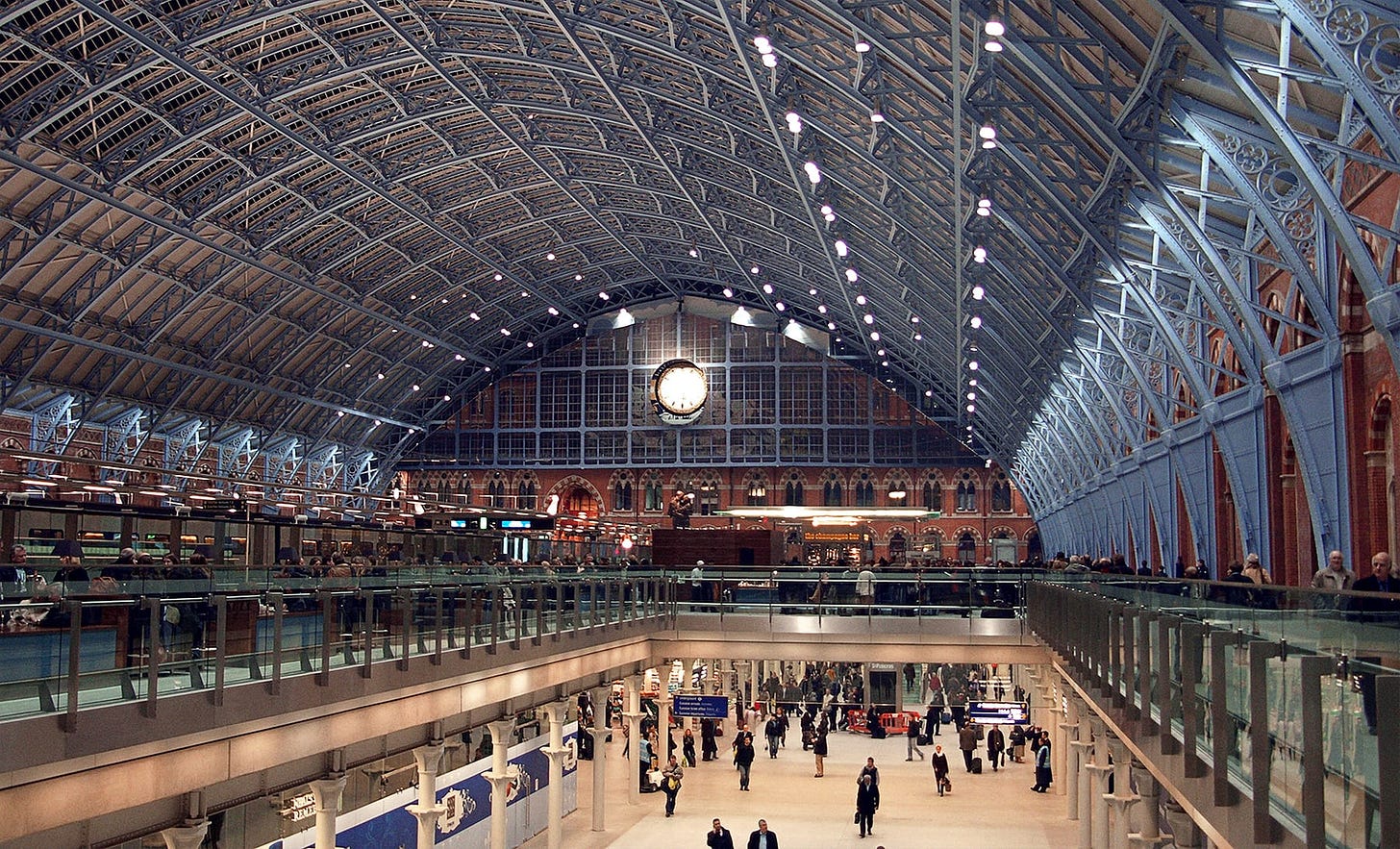
St. Pancras was built next to King’s Cross Station (1851–1852), the Great Northern Railway’s terminus designed by architect Lewis Cubitt. The luxury hotel was esthetically pleasing to the public and hid the inner workings of the station, while King’s Cross’ were exposed.2
From the island back to Italy
Not all train stations in Italy are in old buildings. Inaugurated in 2017, Naples’ Afragola has a modern and futuristic look. The elevated atrium is like a suspension bridge over the tracks with exposed steel.
To complete the work, the 5 thousand square meter glass window allows controlled lighting of the entire space. The station, which is outside Naples, was designed by the Anglo-Iraqi architect Zaha Hadid.
The building itself suggests a wave-like creature more than a static place. Perhaps to suggest the flow of humanity that brings it to life. Inside, the structure is a bridge suspended over the tracks that rises gradually from the ground.
For now, the station’s connections are mostly high-speed trains with Southern routes though Rome.
From the south to the north
Four kilometers outside Reggio Emilia’s city center is Mediopadana, the high-speed railway station designed by the prolific Santiago Calatrava. Inaugurated in 2013, the station’s original shape was meant to be a sail, but the architect changed it to a wave.
A stop on the high-speed Milano-Bologna route, the building resembles a 500-meter (1640 feet) wave of steel portals and laminated glass. The structure’s weight is one a half that of the Eiffel Tower’s.
Inside are two levels around the viaduct. The ticket and tourist offices and some shops are on the lower level, panoramic elevators and escalators lead to the platforms and tracks on the upper. One million travelers a year transit through this place of beauty.
It’s a timeless place that retains its beauty and magnificence up close.
When I was in high school, I took a night train from Bologna to Vienna to visit a pen pal over Easter break. Aside from border agents waking me up to check documents, it was a true adventure.
Night trains are making a comeback in Europe. And they’re not the trains of our grandparents, nor those we had back when I did my trip. For the curious, back-on-track has a map of the routes available.
Reminder: You can support my work and get extra insights—in-depth ideas, information, and interviews on the value of culture.
Become a supporter and access new series, topic break-downs in The Vault.
Access to the platforms is through gated security points where travelers scan their ticket. It’s quite sad that our recent contribution to these places is to gate them, a movement that started probably before the enclosures in England, but that keeps spreading to all kinds of places where the private replaces the public.
At the time, King’s Cross functional station building was celebrated as an engineering triumph and a demonstration of technological and structural progress but was not popularly, or professionally, accepted as ‘real’ architecture. While the elaborate Midland Grand Hotel hid St. Pancras Station as if to suggest that only the former was acceptable for public display, King’s Cross exposed its function—a yellow brick facade with two arched windows flanking a central clock tower was effectively integrated with the sheds behind.







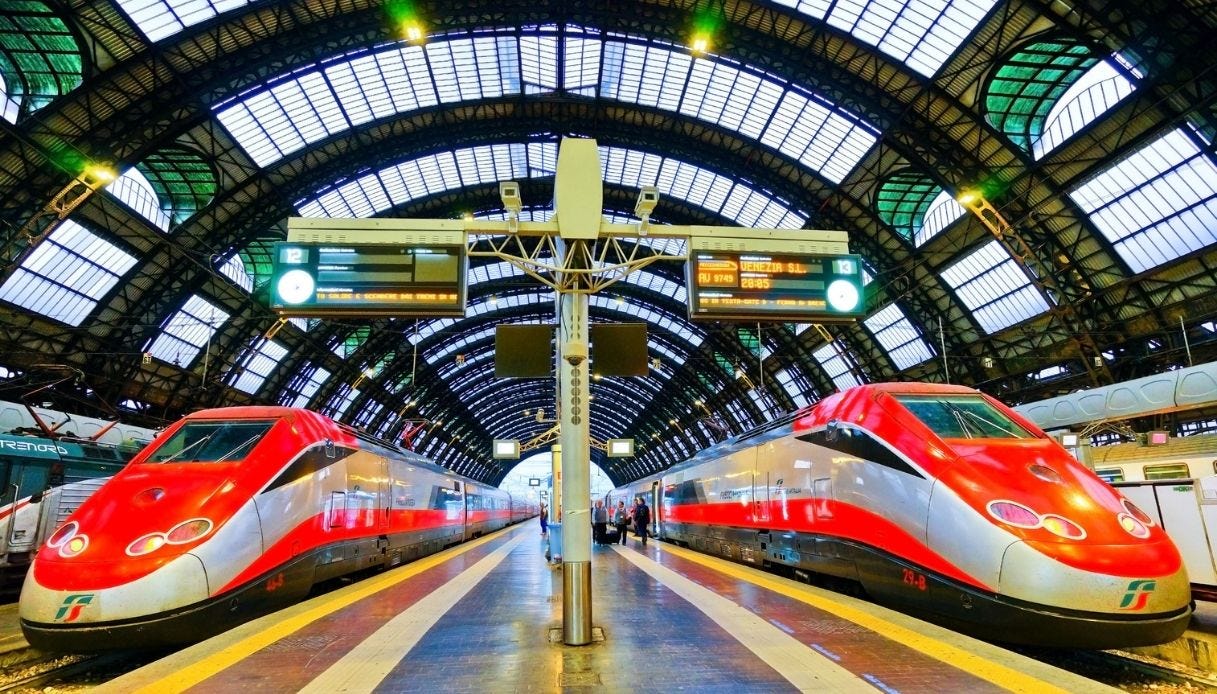




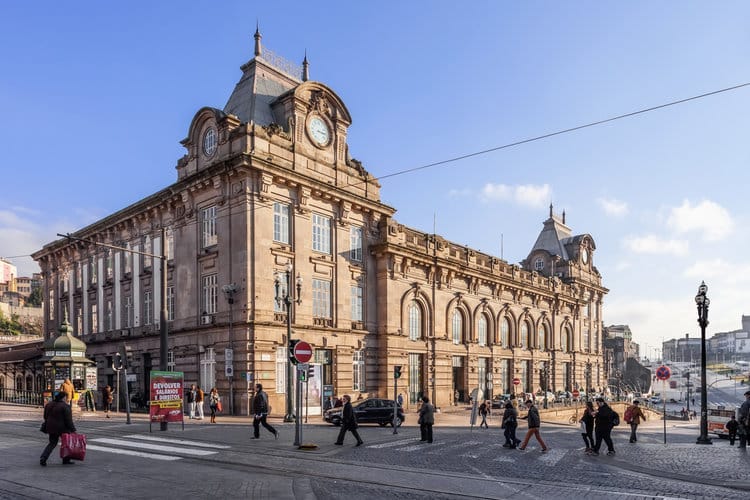

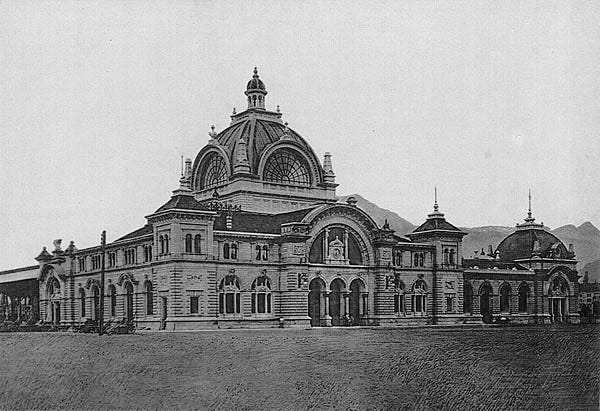
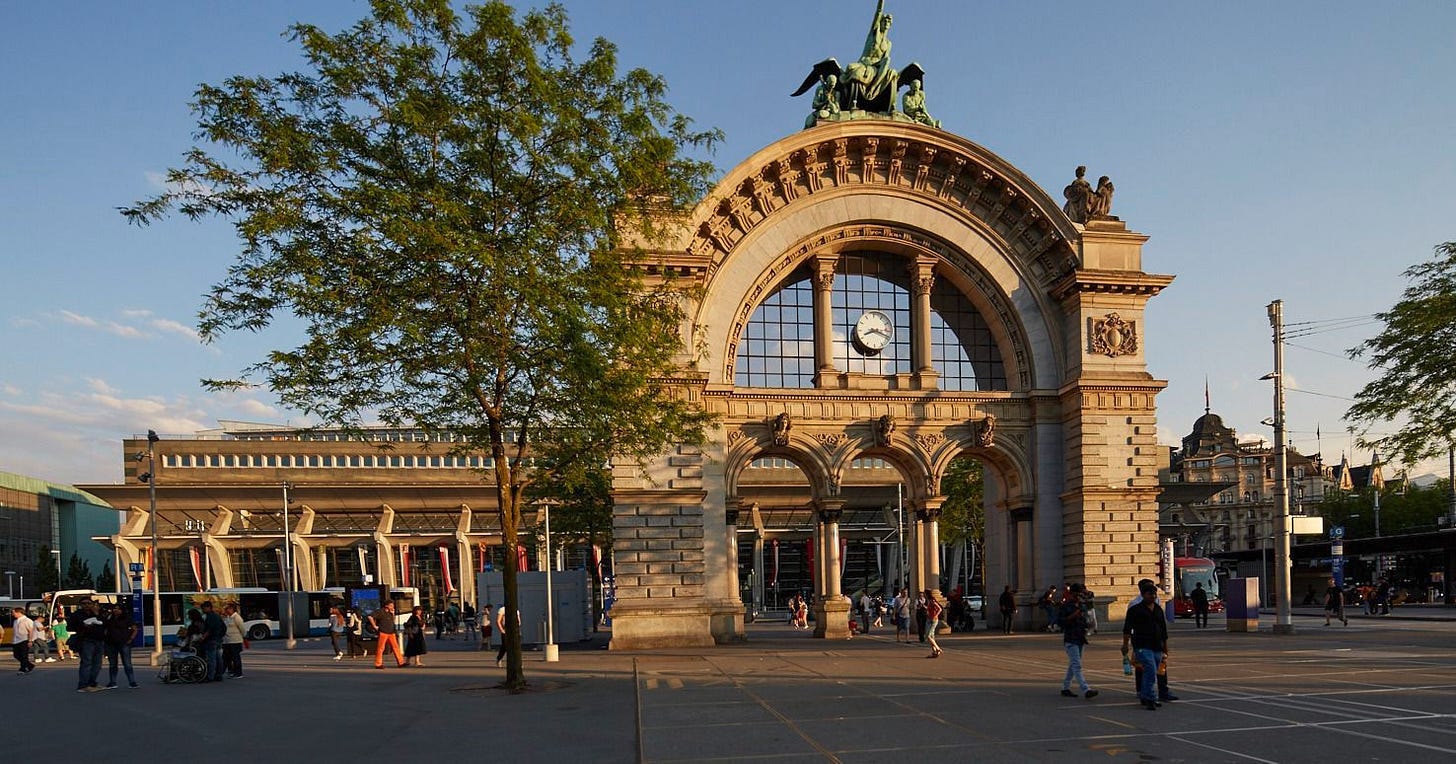
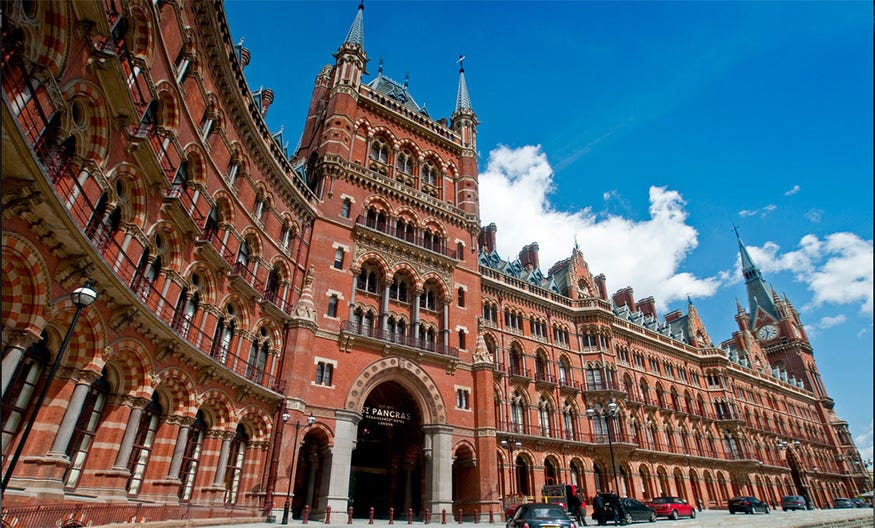




Americans have spent two centuries idolizing Europe with its grand architecture and great trains. Maybe it's time to ask why we don't have a similar rail system in the US. Rail travel is not just the most pleasant way to travel, it's far more sustainable and energy-efficient than air travel. And now with bullet trains in Europe and China, Americans are left in the ruins of a rapacious capitalism that deprived us of this sane and civilized method of transportation.